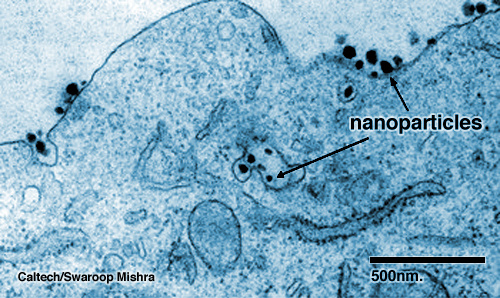By Jimmy Rogers (@me)
Contributing Writer, [GAS]

As you may remember from our article on cancer a while back, tumor cells are essentially cells that never stop growing. This isn’t really a disease like the cold or food poisoning, which can be caught or contracted from some source, but instead a disease of the body’s own regulatory systems. As such, the immune system has a terrible time sorting healthy and sick cells from one another.
One potential solution is a technique called RNAi. Also known as RNA interference, RNAi consists of short regions of RNA (DNA’s more ancient brother) that can target and turn off specific genes. All of the genes in a cancer cell, for instance, rely on messenger RNAs (mRNAs) to take genetic information and convert it into tangible components like enzymes, sugars, and lipids. If certain genes’ mRNAs could be destroyed before they had a chance to do their job, then those genes would be effectively “silenced” and no longer have any effect. This is precisely what RNAi fragments do: they bind to specific mRNAs and signal the cell to destroy them. If we can turn off the genes that allow the cell to survive and take in nutrients, we can effectively “starve” the tumor.
Some of you may have already heard of RNAi because it is used all the time in the laboratory. Unfortunately, it is much harder to administer RNAi fragments (called siRNAs) to a large animal like a human. Even if those fragments were effective at silencing, how would they find and enter the right cells?
This is where nanotech comes in!

The California Institute of Technology has created special nanoparticles (seen as the black dots above) that can recognize and and bind to markers found only on the exterior of a cancerous cell. They also have the cargo space to carry small RNA fragments and can deliver them to the interior of the offending cell. This improves the effectiveness of RNA interference by many orders of magnitude.
While Gizmodo has seen fit to call CIT’s particles “nanobots,” they would probably better be described as “smart nanoparticles.” Naming aside, they may be an instrumental tool for designing the next generation of cancer drugs. Existing drugs can also be loaded into nanoparticles for enhanced, specialized delivery. That’s right: like any good tech…they’re backwards compatible!
If you would like to know the nitty-gritty about CIT’s experiment, you can read their publication in Nature. Otherwise, post a comment or question below and we can discuss the topic further! I’m also available on Twitter if you prefer a “nanoblog” format!
